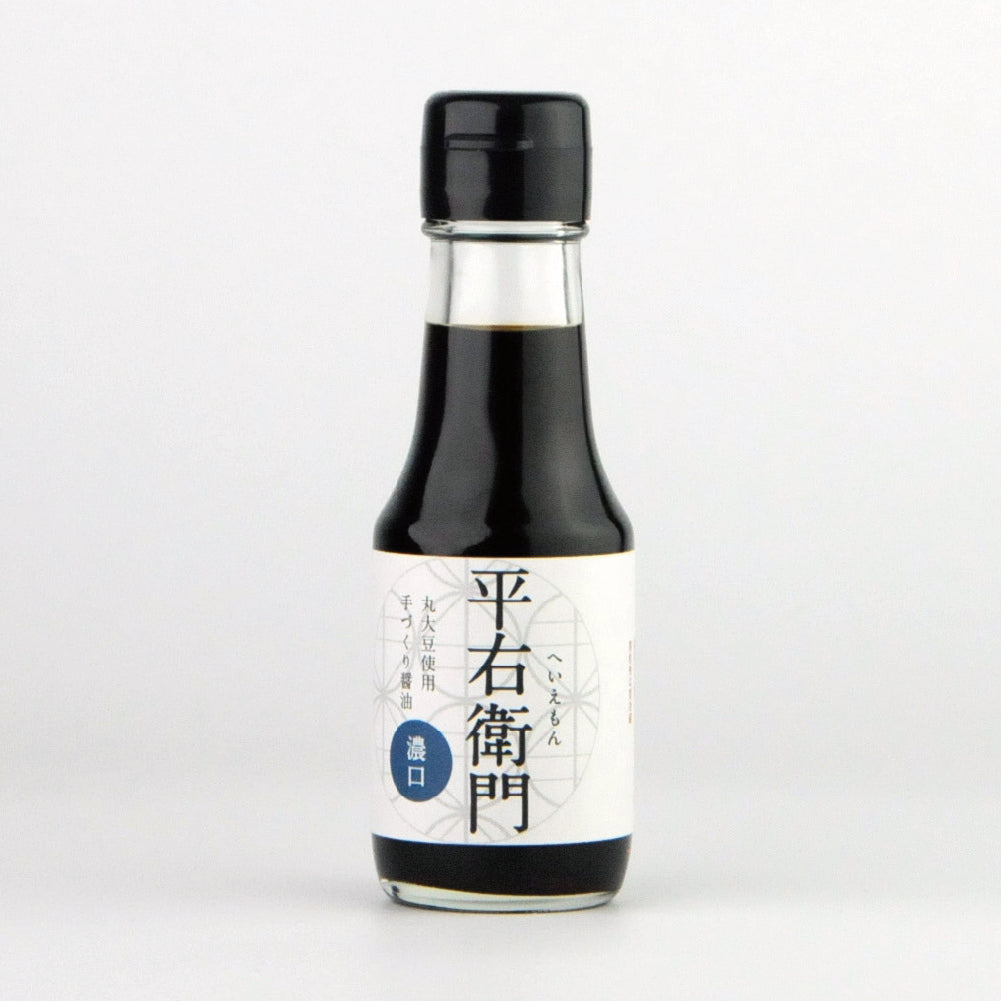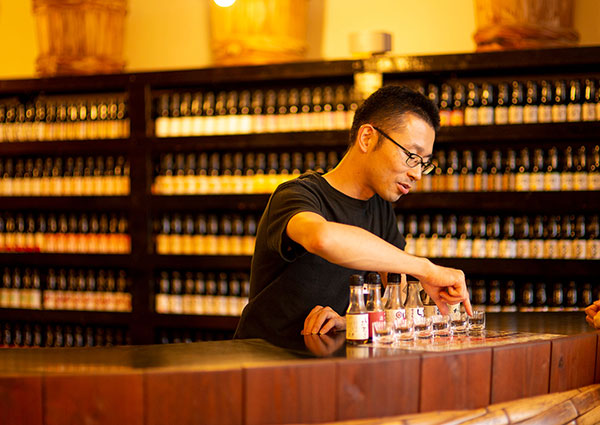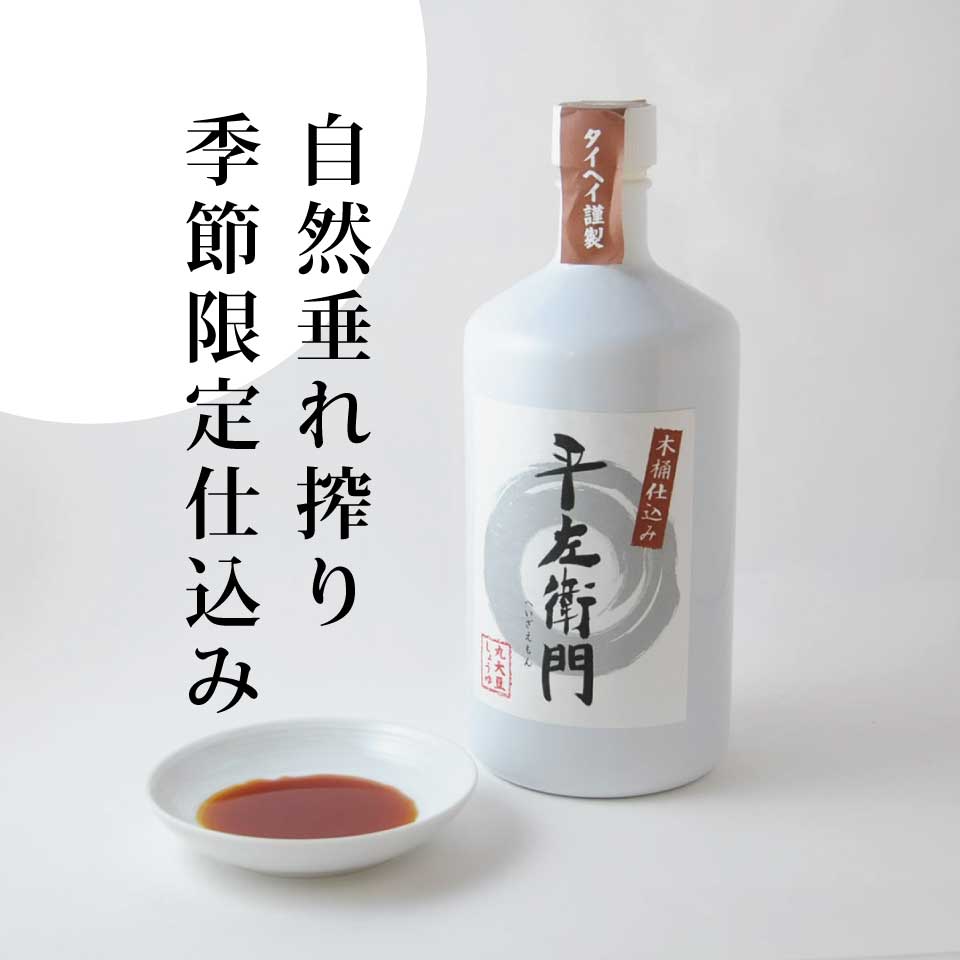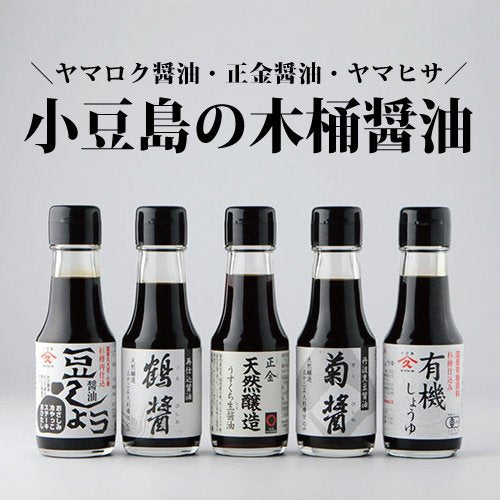











95. Heiemon 100ml
Genuine handmade soy sauce
Shokunin Shoyu No. 95

Because it is a small brewery
Founded in the early Meiji period, the shop brews soy sauce and miso by hand. Making koji is said to be the most important step in soy sauce production, and Suzuki Soy Sauce Shop uses koji lids for this process. This is a rare method even nationwide. Many koji lids are stacked inside the stone room.

Everything is done by hand
It is a time-consuming method. The koji is left to sit in the room for about three days. The pieces are regularly rearranged and the koji that has hardened inside the koji lid is loosened by hand while it grows.
To control the temperature in the room, a small window in the ceiling is opened to let the heat out, and when it's time to heat it up, charcoal is burned on a charcoal grill. All soy sauce breweries used to do this, but today it's a traditional method that is still used by only a few.


Actually, we are also apple farmers.
"We also burn finely chopped apple branches," says Suzuki Yoshihiro, the sixth generation owner. The power of charcoal and soot has a sterilizing effect, so there is no need to disinfect the room with chemicals. But why apple branches? Suzuki is actually an apple farmer. He says that there was a time when he was thinking about focusing on soy sauce, but he decided to continue both, as he had inherited the farm from his ancestors.

Steaming soybeans slowly over time
The way he steams the soybeans is also unique. Suzuki made the soybean steamer himself, remodeling a wooden barrel. Steam is let in from below. While major soy sauce manufacturers steam soybeans quickly under pressure, Suzuki steams them slowly without pressure, taking the opposite approach.
It takes 3 to 5 hours for the soybeans to soften. The chef is constantly adjusting the steam and mixing. The aroma of the soybeans changes as they are cooked, and slow steaming apparently makes them sweeter.

Genuinely Handcrafted
Wooden barrels have an insulating effect, and if you cover them with a lid, the heat won't escape easily. The soybeans are steamed from 1pm to 6pm, and if you leave them overnight, they'll still be hot the next morning. Oxidation will make them more resistant to bacteria.
Although the owner is humble and says he still has a long way to go, it is clear that he enjoys the time-consuming handiwork using traditional tools such as making koji using a koji lid and stirring with a paddle. This is a naturally brewed soy sauce that can be called genuinely handmade.

First, pour it directly onto white rice.
The best way to directly enjoy the charm of carefully crafted soy sauce is to eat it simply. Sprinkle it on warm, freshly cooked white rice. You'll feel the gentle aroma and mellow sweetness of Heiemon and want to savor the taste in a luxurious manner. It's also great to put a little on rice balls.

The secret is the 6th generation's straight posture and smile
I feel that the taste of soy sauce and the personality of the president of the brewery are similar. Suzuki-san is a former high school teacher. When I ask him questions, he answers clearly and politely with a kind smile. The most memorable part of what he said was, "1. Make it in a clean environment, 2. Make it carefully, and 3. Follow the basics. If you do that, it will be delicious even without any special skills!"

The squeezing process is fun
When asked what the most enjoyable part of the job is, he replied, "I guess squeezing the soy sauce, even though my work clothes get the dirtiest." The thought of finally being able to deliver the soy sauce to customers brings him joy. Every time we meet, Suzuki-san never runs out of new topics to talk about. He's tried brewing in the summer, which is usually done in the cold winter months, and he's tried making white soy sauce and light soy sauce... He seems to be constantly exploring new things.
Choose options





































